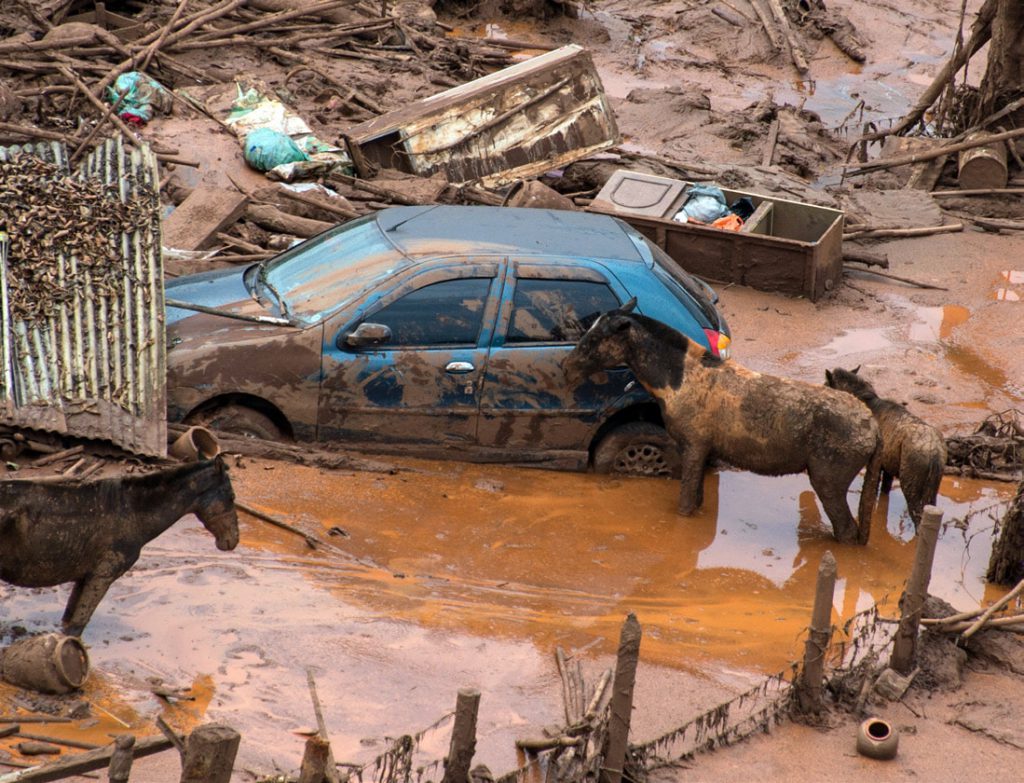January’s fatal tailings dam collapse at Vale SA’s Corrego do Feijao mine has sent the global mining industry once again scrambling to check the integrity of its tailings management systems.
The January 26 tailings dam collapse at the Corrego do Feijao mine near the town of Brumadinho, in Minas Gerais, killed more than 300 people and came just four years after the Samarco tailings collapse in the same state became Brazil’s worst environmental disaster and also killed 19 people.
Brazi’s mining regulator ordered Vale to suspend operations at its Fabrica and Vargem Grande complexes immediately after the Brumadinho disaster.
In a statement, Vale said the mining regulator ordered the suspension in light of the possible failure of five dams at the mining sites in the interior state of Minas Gerais. Since then, both authorities and mining companies have stepped up scrutiny of so-called upstream dams, which have been subject to multiple high-profile failures in recent years.
In a statement, Vale said it was abiding by the regulator’s decision but was asking the body for permission to dismantle the dams, while continuing some operations at the mine, “which would bring about limited impacts on production”.
The miner did not offer an estimate on how much production likely would be lost. However, the company had previously planned to maintain operations at Fabrica via dry mining, which eliminates the need for upstream dams. The company estimated that plan would result in 3mt of lost production in 2019.
“The cost of the wireless monitoring makes more sense than a couple of employees driving around different locations, taking measurements every few months. It eliminates errors, increases safety in remote locations and reduces costs because it is less labour-intensive,” - Kim Malcolm, Geomotion
Minas Gerais is still recovering from the 2015 Samarco collapse which buried a village and poured toxic waste into a major river.
Vale chief executive Fabio Schvartsman said the dam that burst was being decommissioned and its capacity was about a fifth of the total waste spilled at Samarco.
Schvartsman said there had not been any recent construction around the dam and apologised without taking responsibility in a television interview.
“Apologies to society, apologies to you, apologies to the whole world for what has happened,” he said. “I don’t know who is responsible, but you can be sure we’ll do our part.”
The disaster prompted the world’s largest miners to announce risk reviews of their tailings facilities.
BHP Ltd, which was Vale’s JV partner in Samarco, said it had “significantly increased the rigour of its assessment and management” of tailings since 2015, including a risk review which resulted in more than 400 actions being assigned to company assets.
“These actions are 93% complete, with the remaining actions considered low priority such as administrative actions and long-lead items regarding closure and climate change impacts. None of these actions is overdue,” the company said in a statement on February 19.
Rio Tinto Ltd – which has 100 active tailing facilities and a further 36 closed or under rehabilitation – said its tailings facilities were subject to three levels of governance and assurance.
“In August 2015, Rio Tinto introduced a standard for management of tailings and water storage facilities in order to ensure all our managed facilities are operated in accordance with one global standard,” chief executive J-S Jacques said. “In light of this tragic event, Rio Tinto is again reviewing its global standard and, in particular, assessing how we can further strengthen the existing audit of facilities.”
Perhaps the most surprising aspect of the disaster is how late Vale was in recognising the dangers.
Schvartsman said equipment had shown the dam was stable on January 10 and it was too soon to say why it collapsed. However, according to Geomotion Australia managing director Kim Malcolm, modern instrumentation and software allow for real-time monitoring of tailings facilities.
“In the past it was prohibitive to have real-time monitoring because of all the cabling required but now wireless data loggers are readily available; there was never previously anything available that could do that,” he said.
Geomotion works with a number of major miners in Australia including Rio Tinto, South32 Ltd and Newmont Australia providing geotechnical and structural instrumentation and asset monitoring. Malcolm said the days of having just a few sensors on a tailings dam, intermittently monitored by hand were rapidly ending.
“The cost of the wireless monitoring makes more sense than a couple of employees driving around different locations, taking measurements every few months. It eliminates errors, increases safety in remote locations and reduces costs because it is less labour-intensive,” he said.
Software such as the Mission Monitoring operating system also allows companies to anticipate problems as well as alerting them to impending spills.
“It is less about the alarms but about the constant, real-time review,” Malcolm said. “It allows you to see the trends well before anything happens.”
The web-based software could also present opportunities for companies to better relate their tailings management to affected communities.
“The software is designed so alarms are set up on individual smart phones,” Malcolm said. “It allows companies to select who has access to the alarms and they can even present the monitoring data on open websites to ensure their management has a more public-facing interface.”
– Dominic Piper – Australia’s Paydirt (March 2019)
